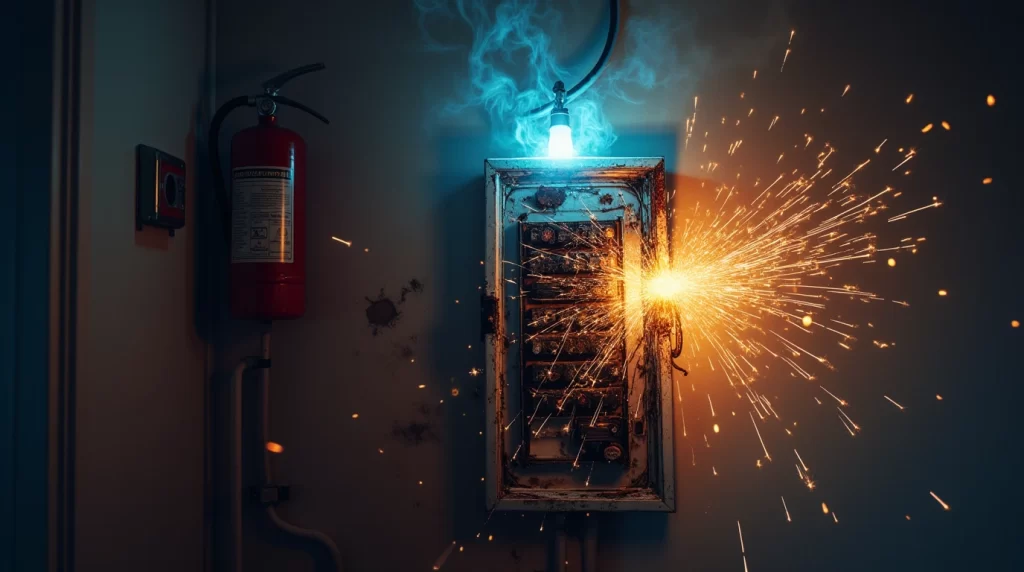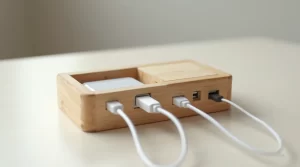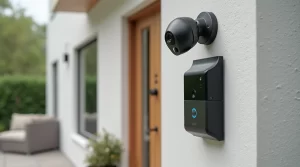Electricity keeps our modern lives running smoothly, but it can also pose serious risks if mishandled. Common electrical hazards—from overloaded circuits to faulty wiring—can lead to fires, shocks, and costly damage. Fortunately, with some basic knowledge and preventive measures, you can safeguard your home and loved ones. In this guide, we’ll outline the most frequent dangers lurking in your electrical system and how to avoid them.
1. Overloaded Circuits
Why it’s a hazard: Plugging too many devices into a single circuit can cause excessive heat, tripped breakers, or, in worst cases, electrical fires.
Signs of Overload:
- Flickering or dimming lights when appliances switch on
- Breakers frequently tripping
- Warm or buzzing outlets
Prevention Tips:
- Distribute high-wattage appliances (like microwaves, heaters, air conditioners) across different circuits.
- Upgrade your electrical panel if it no longer meets modern demands.
- Related Resource: Check our guide on Maximizing Home Comfort: Essential Electrical Upgrades for a Cozy Winter to learn about panel capacity and dedicated circuits.
2. Faulty or Outdated Wiring
Why it’s a hazard: Old wiring, often found in older homes, may not meet current safety standards. Worn insulation or compromised connections can spark dangerous arcing.
Warning Signs:
- Circuit breakers tripping often
- Frayed or exposed wires
- A persistent burning smell near outlets or switches
Prevention Tips:
- Schedule a professional inspection if your home is 30+ years old.
- Replace aluminum wiring or knob-and-tube systems with modern copper wiring.
- Keep your wiring up to code by referencing Electrical Code Updates and Safety Standards: What Homeowners Need to Know.
3. Extension Cords and Power Strips Misuse
Why it’s a hazard: Extension cords, when used permanently or in heavy loads, can overheat or degrade over time. Power strips also pose a risk if daisy-chained or used with high-wattage devices.
Prevention Tips:
- Avoid “octopus outlets” where multiple strips plug into each other.
- Use extension cords only as a temporary fix.
- For permanent solutions, add extra outlets or dedicated circuits.
Expert Tip: If you rely on extension cords extensively, it might be time for a wiring upgrade. A licensed electrician can install additional outlets or circuits precisely where you need them.
4. Wet Areas and Electrical Components
Why it’s a hazard: Water conducts electricity, increasing the risk of shock if appliances or outlets come into contact with moisture.
Common Risk Areas:
- Bathrooms, kitchens, laundry rooms
- Outdoor sockets and garden lighting
- Basements prone to floods
Prevention Tips:
- Install Ground Fault Circuit Interrupters (GFCIs) in damp zones to cut power instantly if a fault is detected.
- Use weatherproof covers on outdoor outlets.
- Check for leaks or condensation around your electrical panel—moisture in this area is a major red flag.
5. DIY Mistakes
Why it’s a hazard: While some electrical tasks seem simple, even minor errors can have severe consequences. Using the wrong gauge wire or mislabeling circuits can lead to shocks or system failure.
Prevention Tips:
- Call a professional for complex jobs like panel upgrades or rewiring.
- If you do attempt minor repairs, switch off power at the main breaker and use non-contact voltage testers for safety.
- Check out DIY: How to Test and Replace Batteries in Your Smoke Detectors for simpler tasks that most homeowners can handle confidently without risking the broader system.
6. Lightning Strikes and Surges
Why it’s a hazard: Power surges, whether from lightning or grid fluctuations, can fry sensitive electronics and damage wiring over time.
Prevention Tips:
- Install whole-home surge protectors at your electrical panel.
- Use point-of-use surge strips for valuable electronics like TVs and computers.
- Unplug non-essential devices during severe storms.
Reference: The National Fire Protection Association (NFPA) provides guidelines on lightning safety and surge protection measures.
7. Preventive Measures and Professional Help
- Routine Maintenance
- Inspect cords, plugs, and outlets for wear or damage.
- Keep tabs on your breaker panel; test breakers occasionally to ensure they aren’t sticking.
- Upgrade and Modernize
- Consider upgrading your electrical panel if it’s undersized.
- Replace outdated outlets with modern GFCI/AFCI models.
- Professional Inspections
- When to call a pro: Frequent breaker trips, dimming lights, or burning smells.
- For major renovations or new appliances, consult an electrician to ensure your system can handle the load.
Need help assessing your home’s electrical demands or suspect a hidden hazard? Kendrick Electric offers comprehensive inspections, panel upgrades, and code compliance checks.
Conclusion and Call to Action
By staying alert to common electrical hazards like overloaded circuits, outdated wiring, and improper cord usage, you can protect your home and family from serious risks. Most hazards can be prevented with proactive maintenance and professional guidance—so don’t wait for a small issue to become a major problem.
Ready to secure your home’s electrical system? Contact Kendrick Electric at (435) 752-1888 or reach out online to schedule an inspection or consultation. Our licensed electricians will help you eliminate hidden dangers and keep your home running smoothly.



